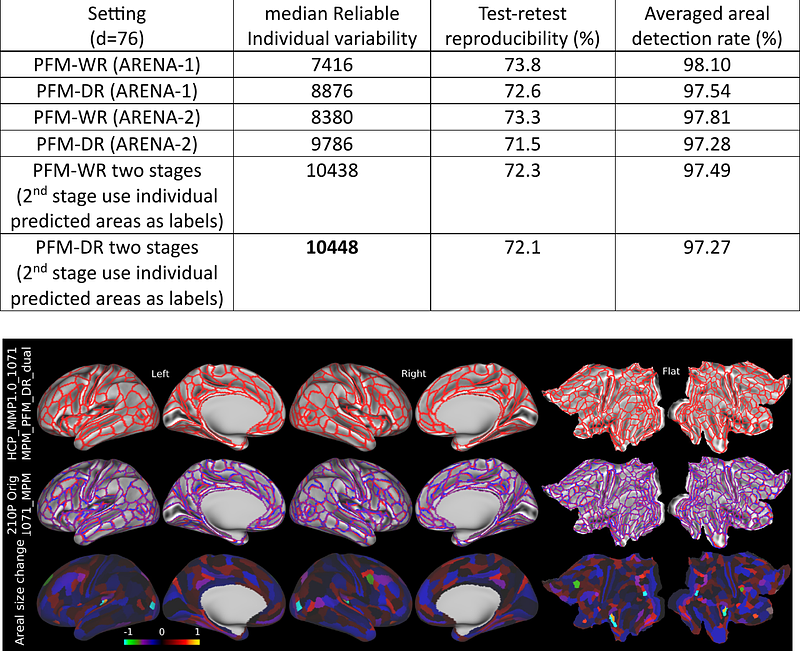Automatic Individual Cortical Parcellation for the Human Connectome Project

Automatic Individual Cortical Parcellation for the Human Connectome Project
Yang, C.; Coalson, T. S.; Farahibozorg, S.-R.; Bijsterbosch, J. D.; Smith, S. M.; Van Essen, D. C.; Glasser, M. F.
AbstractThe original Human Connectome Project multimodal cortical parcellation (HCP_MMP1.0) used MRI-derived local features and long-distance functional connectivity measures to define a multimodal parcellation at the group level, accompanied by an automated areal classifier, to create subject-specific mappings of the human cerebral cortex. These mappings, referred to as individual (cortex) parcellations, aim to capture individual variability in areal organization by learning from both structural and functional data. However, a strict supervised learning approach using the group parcellation as labels would have no incentive to learn individual differences that registration is unable to reconcile (e.g., atypical 55b topologies). Furthermore, there are many types of resting state network (RSN) feature maps, and it is unclear which type would most accurately or effectively classify areas, or even what should be the primary criteria for evaluating classification performance. Here, we introduce an Areal Recognition Ensemble with Nested Approach (ARENA) classifier that learns from uncertain labels, using a novel application of weakly supervised learning to this type of problem. Additionally, in comparing multiple candidate RSN decompositions, temporal ICA and PROFUMO maps outperformed the original spatial ICA-based approach based on objective criteria. With these refinements, the ensemble classifier achieved a reliable individual variability score of 8380, an average areal detection rate of 97.8%, and test-retest reproducibility of 73.3%, outperforming a retrained version of the original Multi-layer Perceptron (MLP) model (whose reliable individual variability score was 3128, average areal detection rate was 97.2%, and test-retest reproducibility was 71.6% on the same dataset). Furthermore, the ARENA classifier demonstrated stronger generalization for all three measures when applied to task fMRI data that were not part of the training dataset. Using the refined classifier and leveraging all 1071 HCP-Young Adult subjects, we identified new types of atypical organization of language-related area 55b. Here we provide the fully data-driven HCP_MMP1.0_1071_MPM (Maximum Probability Map) group parcellation and a summary of area 55b organization in both hemispheres. Our automated individual parcellation pipeline powered by the novel ARENA classifier is now integrated into the HCP pipelines, offering a user-friendly tool for the neuroimaging community.